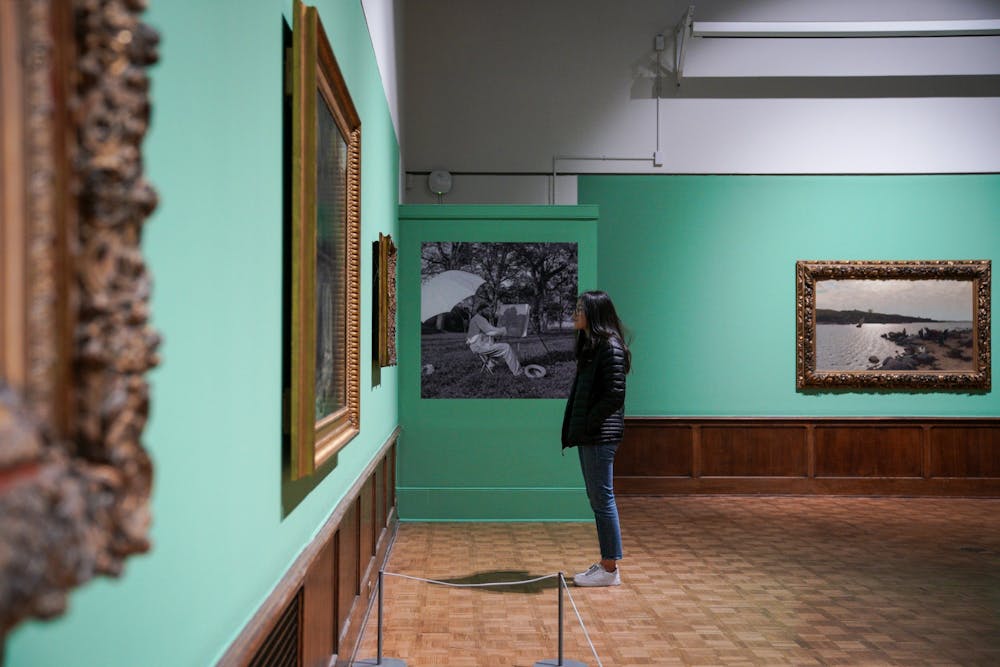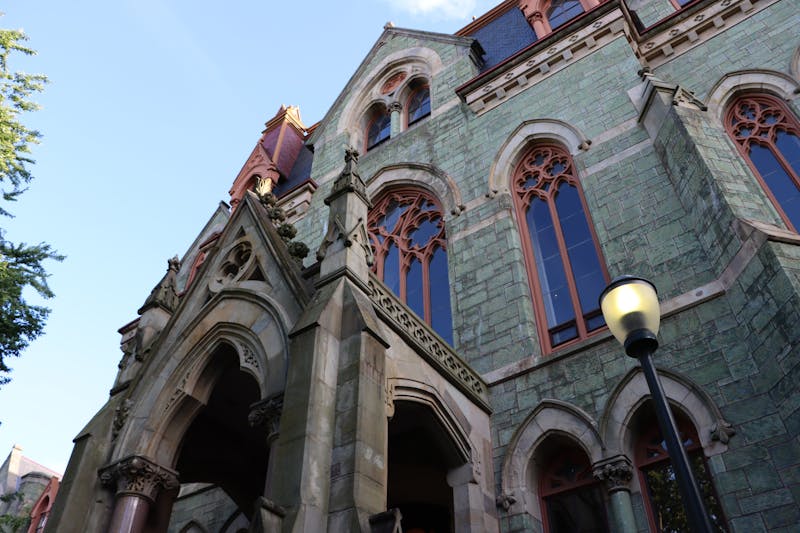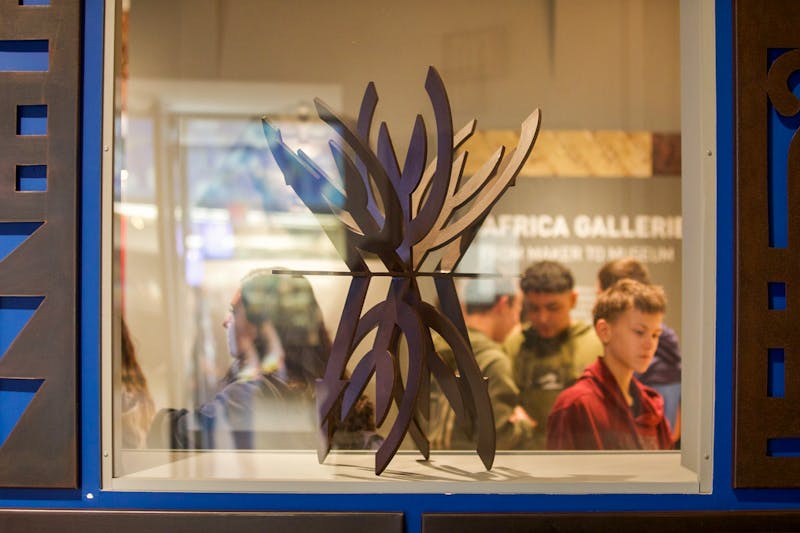
The exhibition "At the Source: A Courbet Landscape Rediscovered" in the Arthur Ross Gallery is on display from Feb. 4 to May 28.
Credit: Anna VazhaeparambilPenn’s Arthur Ross Gallery unveiled a new exhibition last Friday, which features a recently rediscovered Gustave Courbet landscape painting that has been unseen for almost 100 years.
Courbet’s painting was found in storage at Penn’s School of Dental Medicine in 2016, according to the Arthur Ross Gallery. The painting, entitled “The Source of the Lison,” depicts the source of the Lison River in France. It was completed in 1864 using oil on canvas. Courbet was a French realist painter active in the 19th century.
The exhibition, "At the Source: A Courbet Landscape Rediscovered," will feature Courbet's painting and other 19th-century landscape paintings from Feb. 4 to May 28.
The exhibition is accompanied by a catalog featuring leading Courbet scholarship, as well as the podcast Big Art Energy, which will tell the journey of the painting's rediscovery. Special programs and events are planned for the remainder of the exhibit, including lectures, short talks, and conversations with the Courbet scholars and experts.
“Focusing on the motifs of grottos and waterfalls in his art of the 1850s and 1860s, the exhibition highlights the newly re-discovered Courbet painting, not shown in public for close to 100 years, emphasizing the process of authenticating and conserving this historic work,” the Arthur Ross Gallery said in a press release.
Penn President Liz Magill toured the exhibition on Feb. 3, according to the Office of the President.
The exhibition was curated by Lynn Marsden-Atlass, Executive Director of the Arthur Ross Gallery and University Curator, and André Dombrowski, Frances Shapiro-Weitzenhoffer Associate Professor of 19th-Century European Art at Penn.
Following the discovery in 2016, the painting was conserved, and in 2018 it was scientifically examined. In April 2022, the painting was officially authenticated by the Institut Courbet in Ornans, France, according to the Arthur Ross Gallery.
The painting was a 1912 bequest of Thomas Evans, who was a Philadelphia-born surgeon dentist to Napoléon III and Empress Eugénie. After Evans’ death in 1897, he gave most of his fortune to The Thomas W. Evans Museum and Institute Society in Philadelphia. In 1912, the society and Penn signed an agreement to establish the Thomas W. Evans Museum and Dental Institute, which is now part of Penn Dental Medicine.
The Daily Pennsylvanian is an independent, student-run newspaper. Please consider making a donation to support the coverage that shapes the University. Your generosity ensures a future of strong journalism at Penn.
Donate






